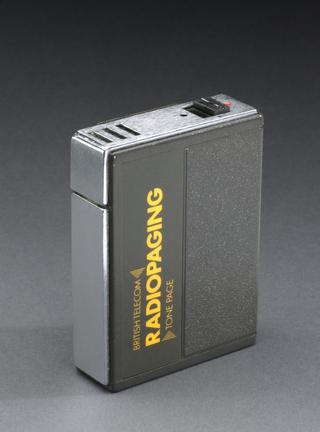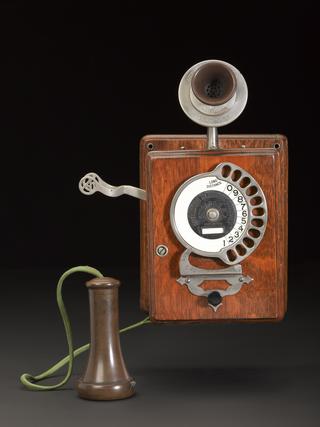






24 segment Baudot plate distributor, unknown maker, France, 1870-1924.
The Baudot telegraph system allowed several telegraph messages, typically four, to be sent along the same wire simultaneously. It was developed in France by Émile Baudot (1845-1903), who made use of the fact that a single operator did not make efficient use of the line. The operators worked in exact synchronisation, each sending their segment when a 'cadence note' sounded. The distributor was central to the operation of the Baudot telegraph system, as it connected each transmitter and receiver to the single line in turn. It operated using revolving brushes of flexible metal, which were driven by weights or an electric motor. These brushes swept over the surface of the plate segments in pairs.
Details
- Category:
- Telecommunications
- Object Number:
- 1924-155
- Materials:
- textile, metal (unknown), plastic (unidentified) and copper (alloy)
- Measurements:
-
overall: 45 mm x 140 mm diameter, 1.27 kg
- type:
- telegraph
- credit:
- Donated by the General Post Office (West)




